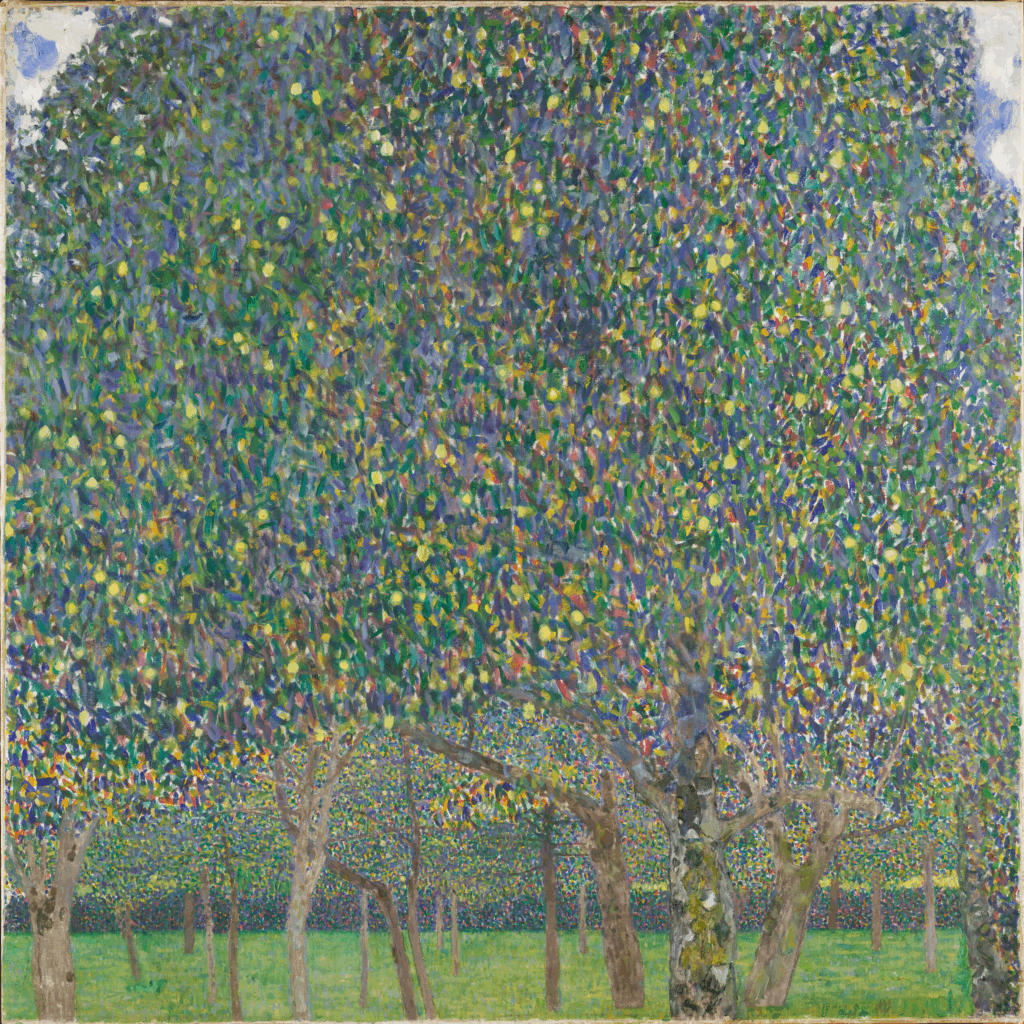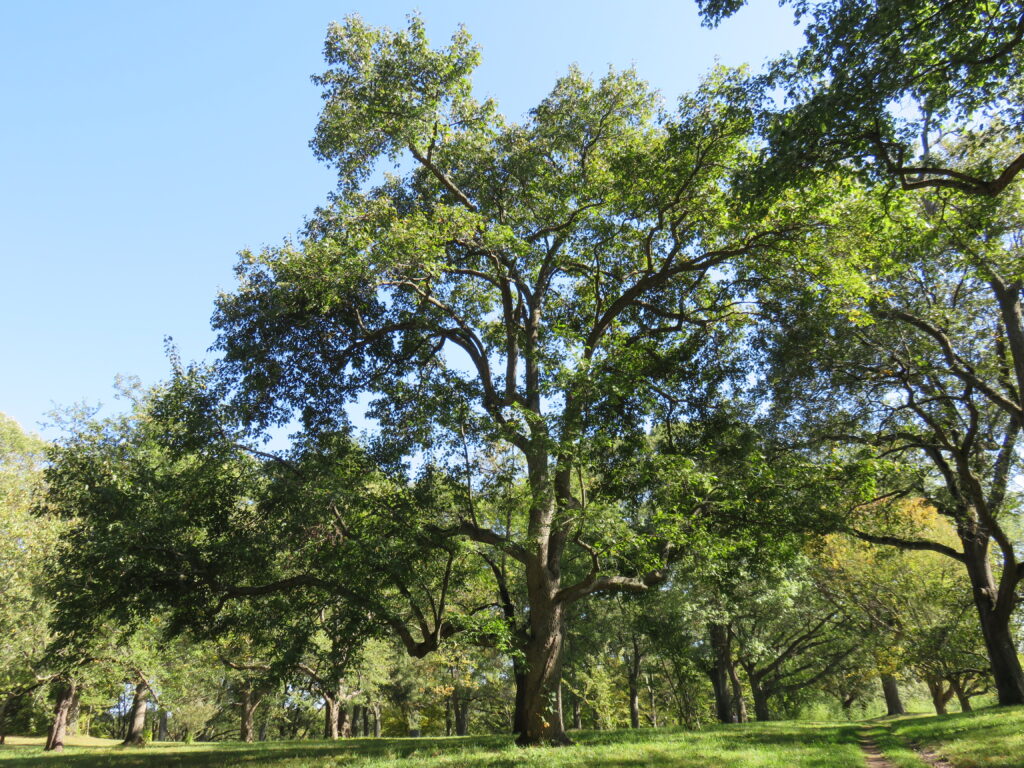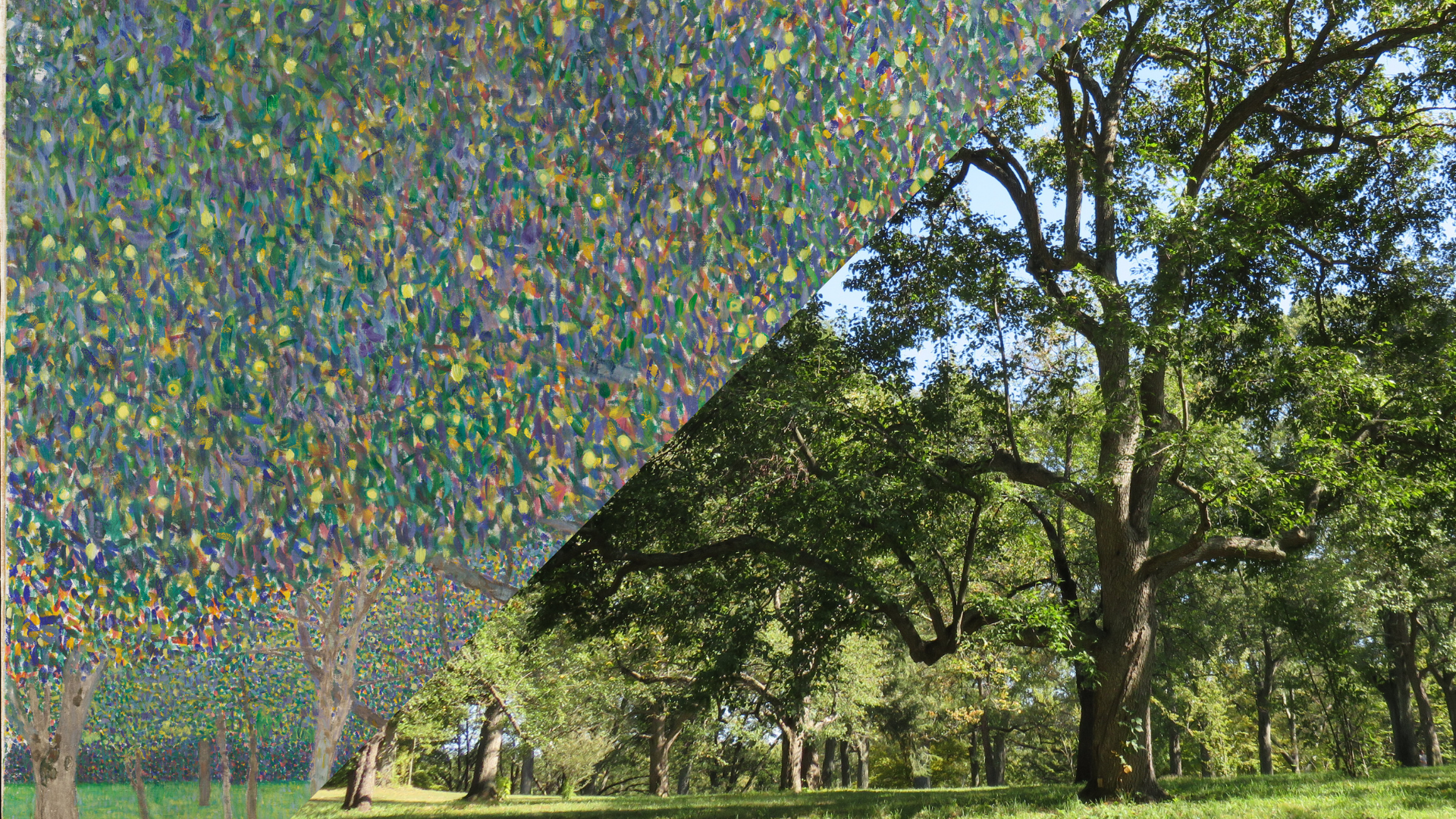Our Double Take series is a collaboration with Harvard Art Museums, pairing objects from both collections: a plant from the Arnold Arboretum + a work of art from the Harvard Art Museums.
This month, Gustav Klimt’s Pear Tree inspired a trip to the Arboretum’s pear collection.
In 1903, Gustav Klimt painted Pear Tree, a luminous vision of gold, green, and light, now at the Harvard Art Museums. Just a few miles away, the Arnold Arboretum tends another pear from around the same era, one grown from seed that was collected in Japan in 1918.

“The Arboretum’s living collection contains 93 individual pear trees (but no partridges, I’m afraid),” says Michael Dosmann, Keeper of the Living Collections at the Arboretum, “They represent 13 different species of Pyrus that were collected from 8 different Eurasian countries spanning from Hungary to Japan.”

The left side of Klimt’s painting has a noticeably denser application of paint than the center or the right side. Klimt continued to add to the painting, filling in these bare spots, even after giving it to Emilie Flöge, his muse and mistress, in 1903. In a similar way, the pear trees at the Arboretum change year over year as they bud, flower, leaf out, fruit, senesce, and begin again.
Visit the callery pear (10793*A) at the Arboretum on Peters Hill.
Visit the painting (BR66.4) at the Art Museums on the first floor.
